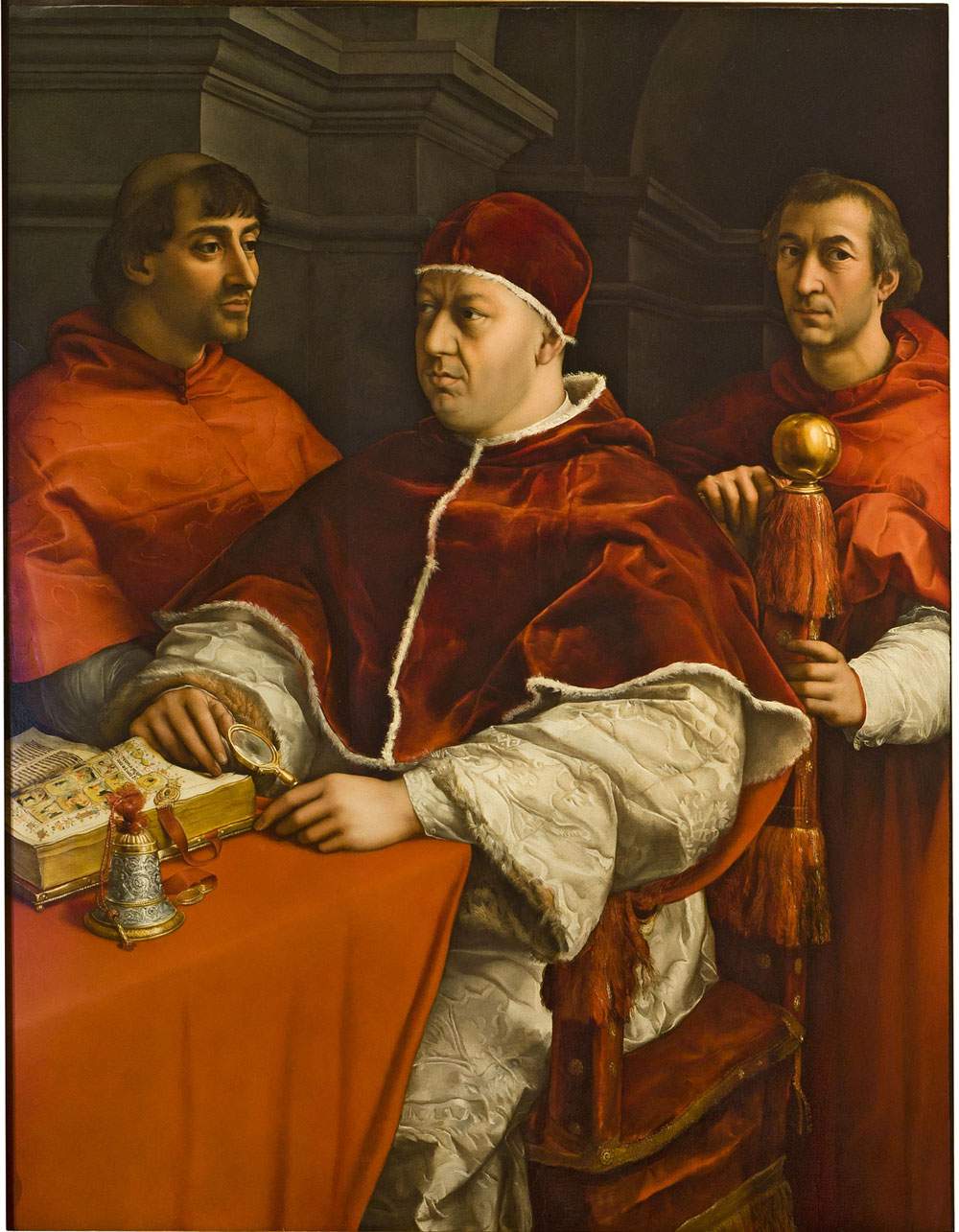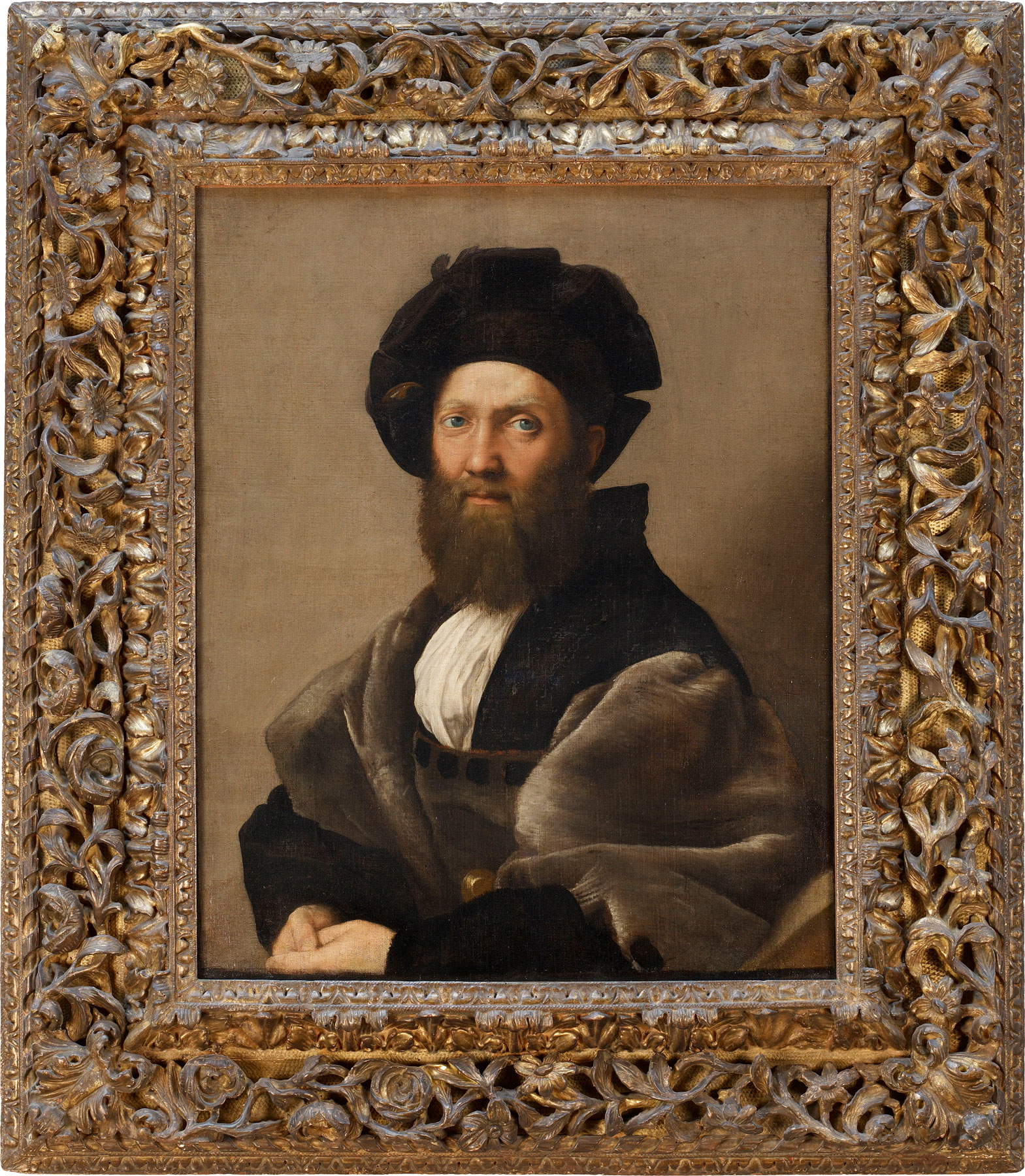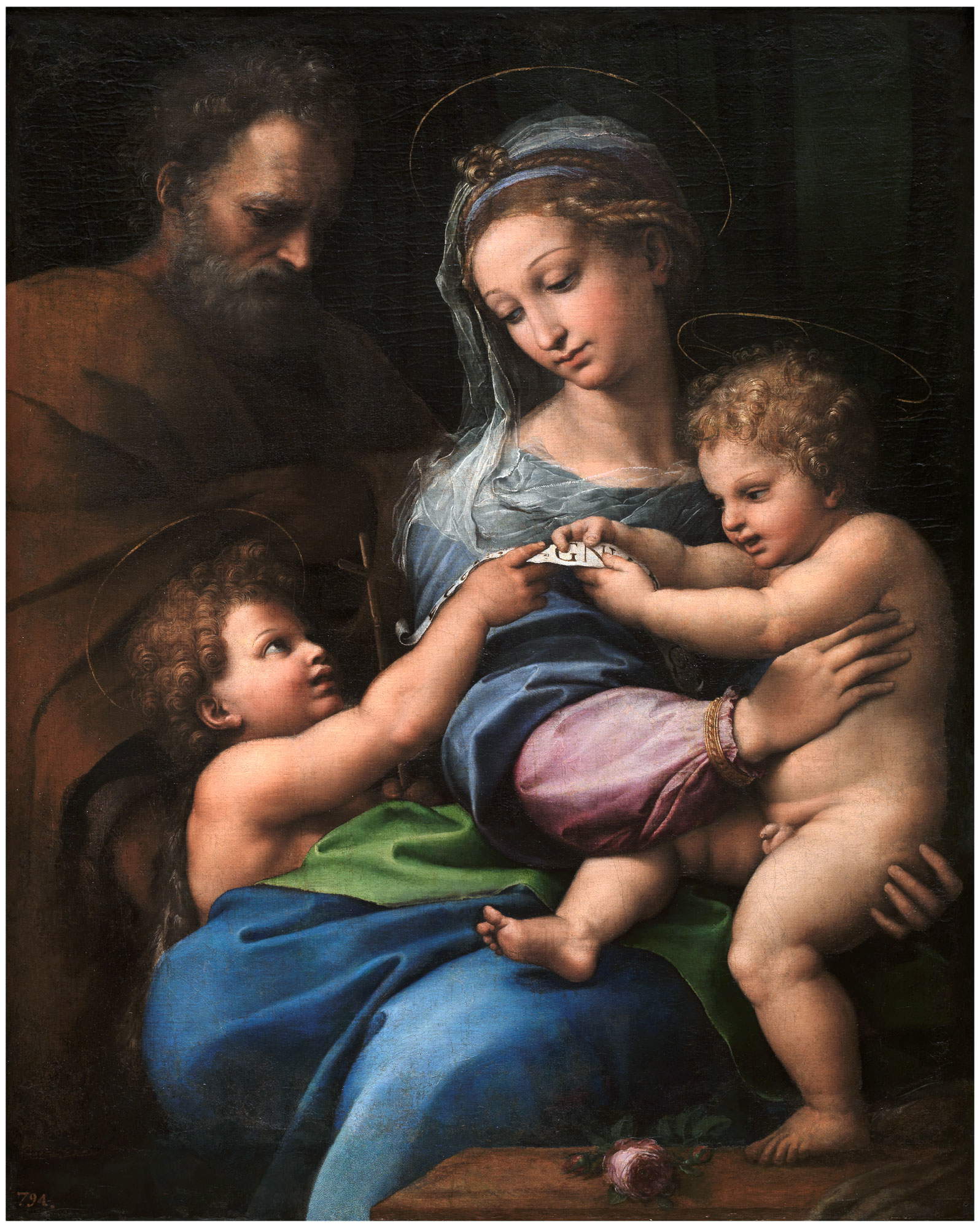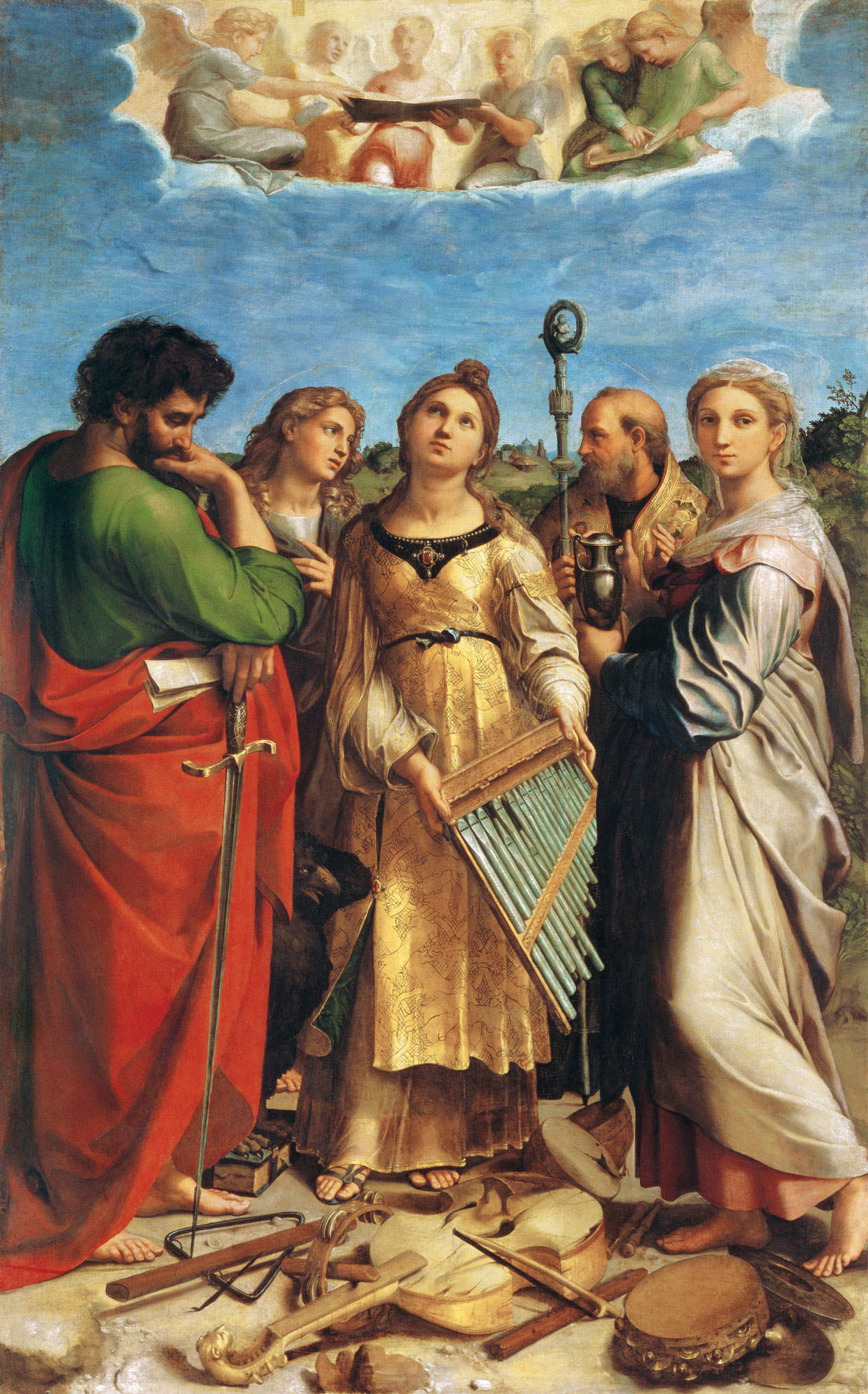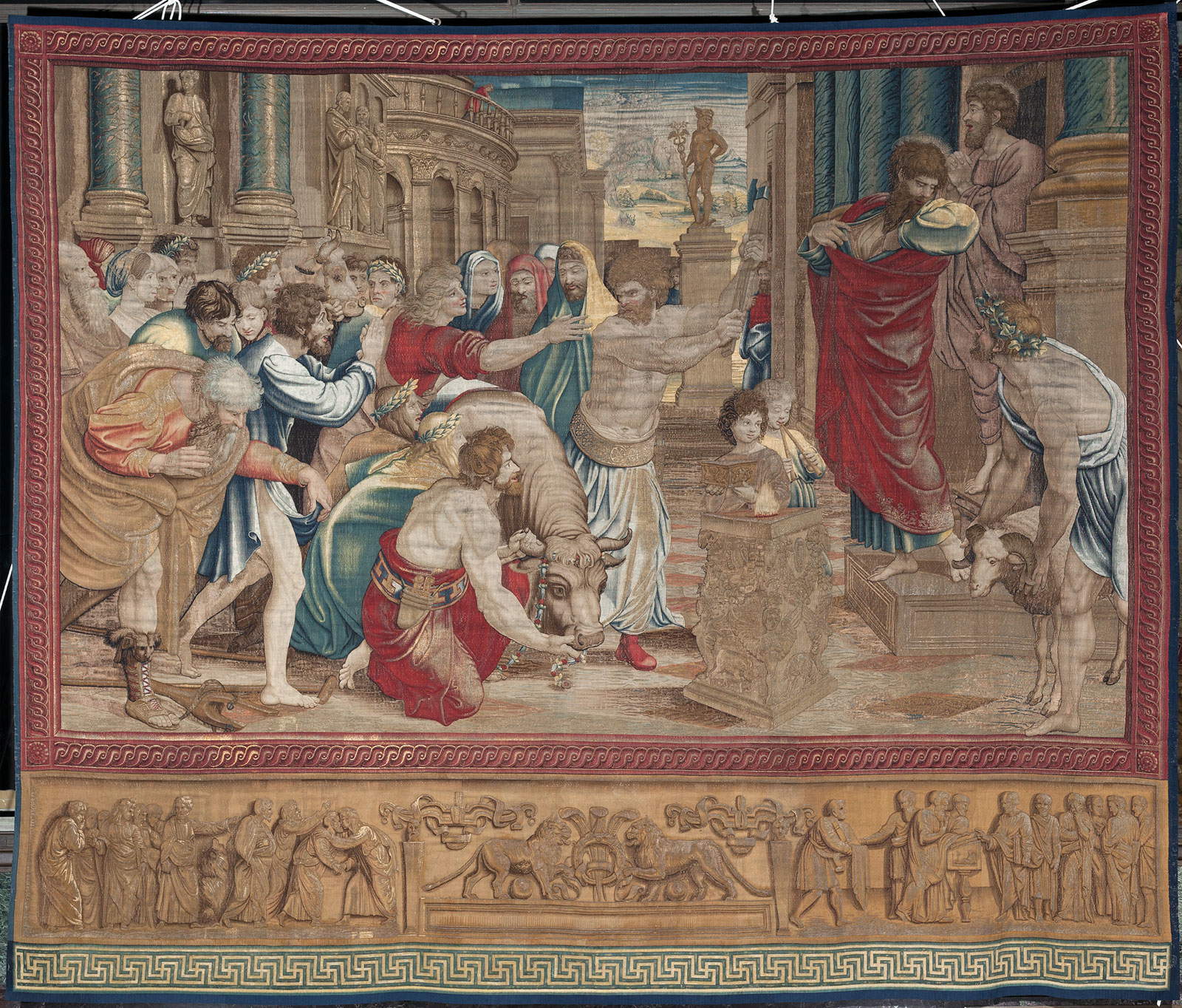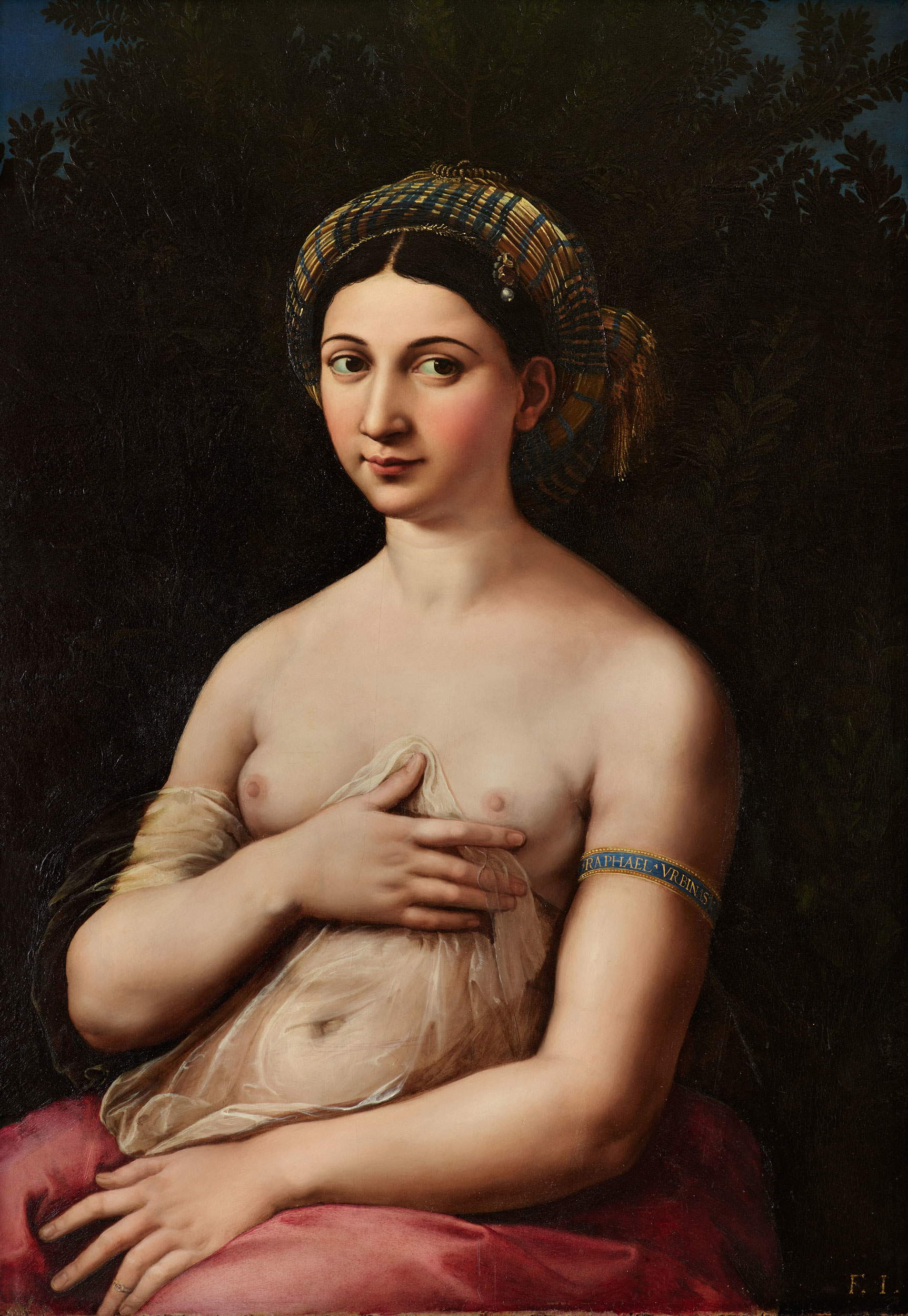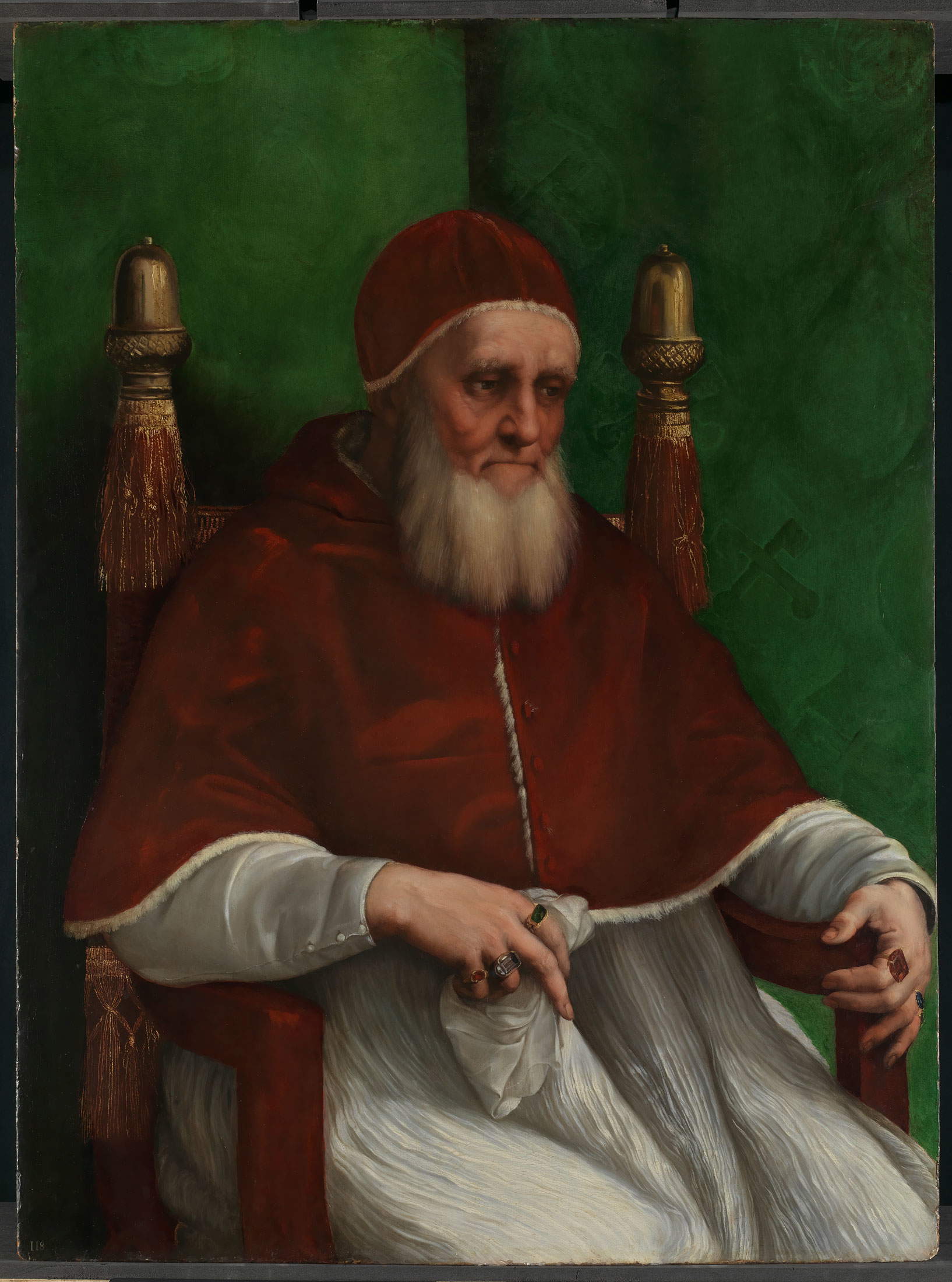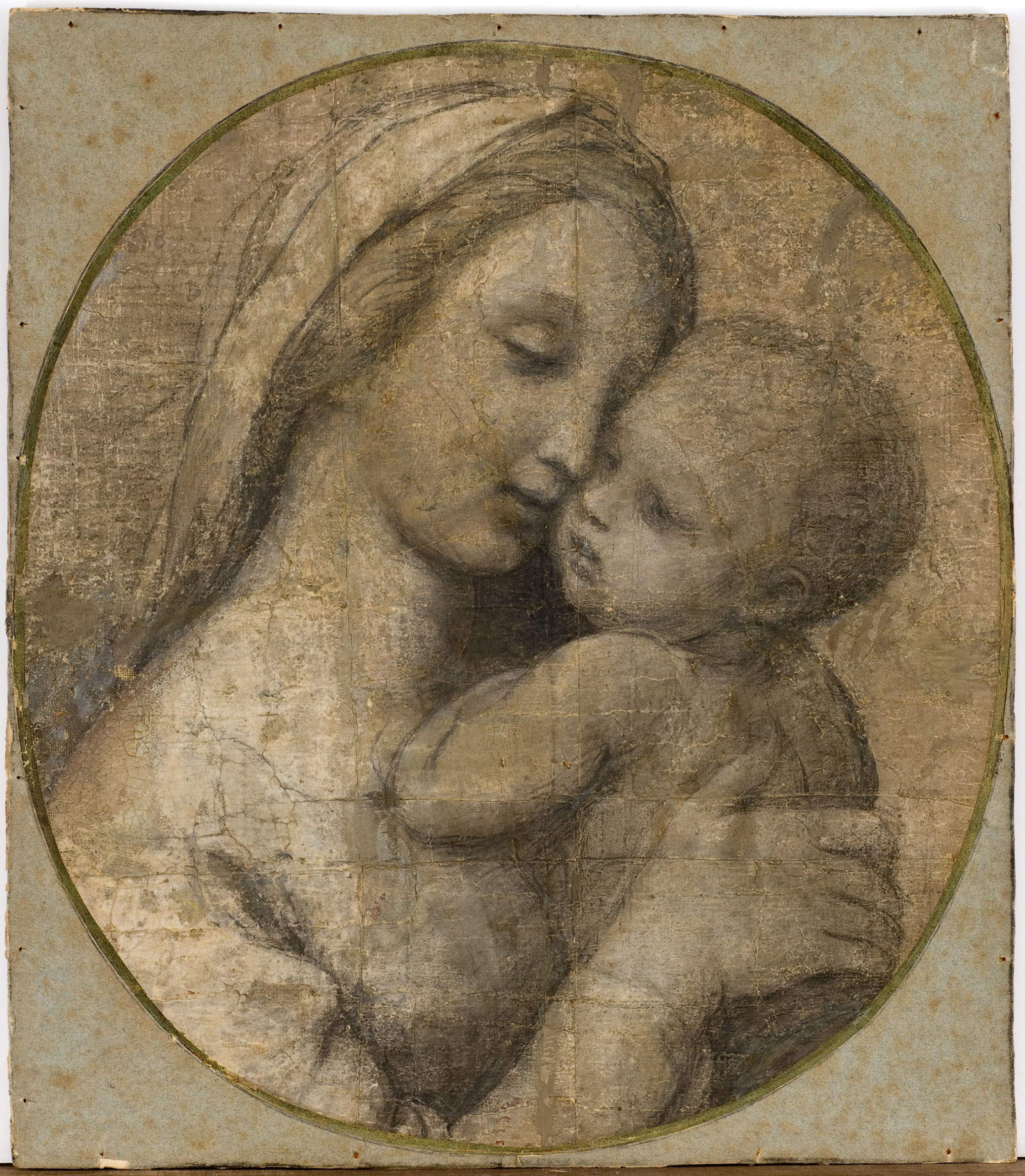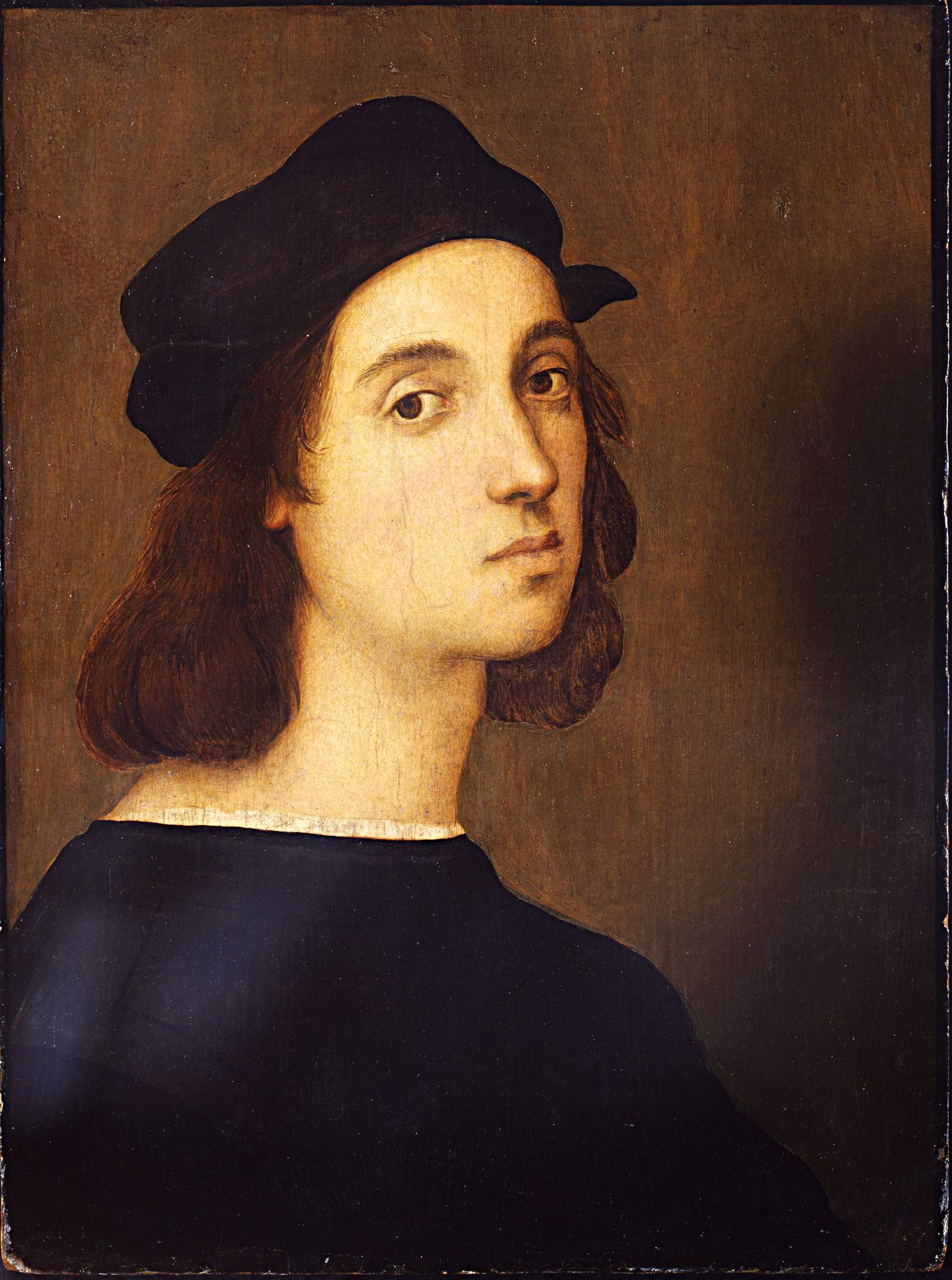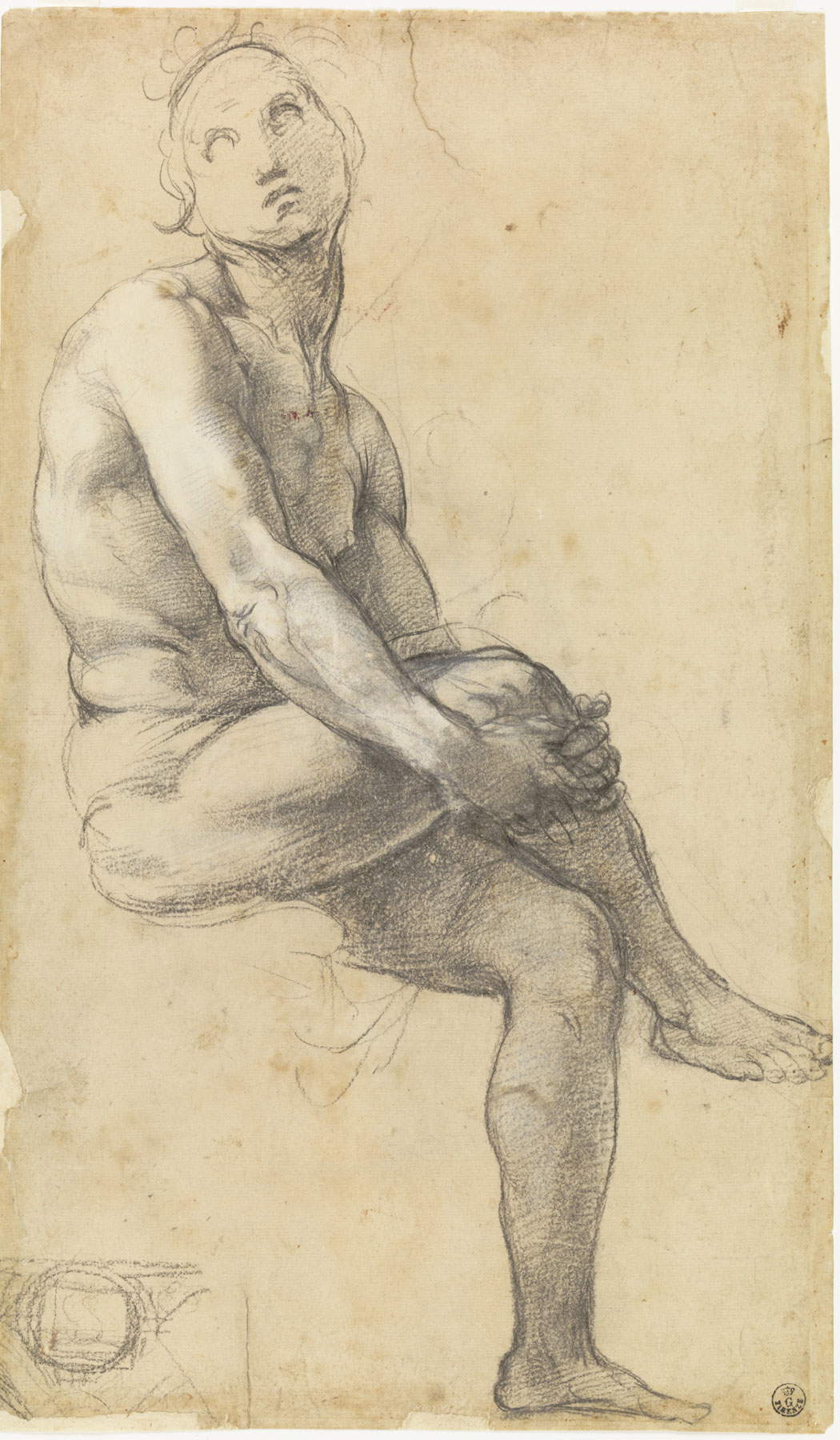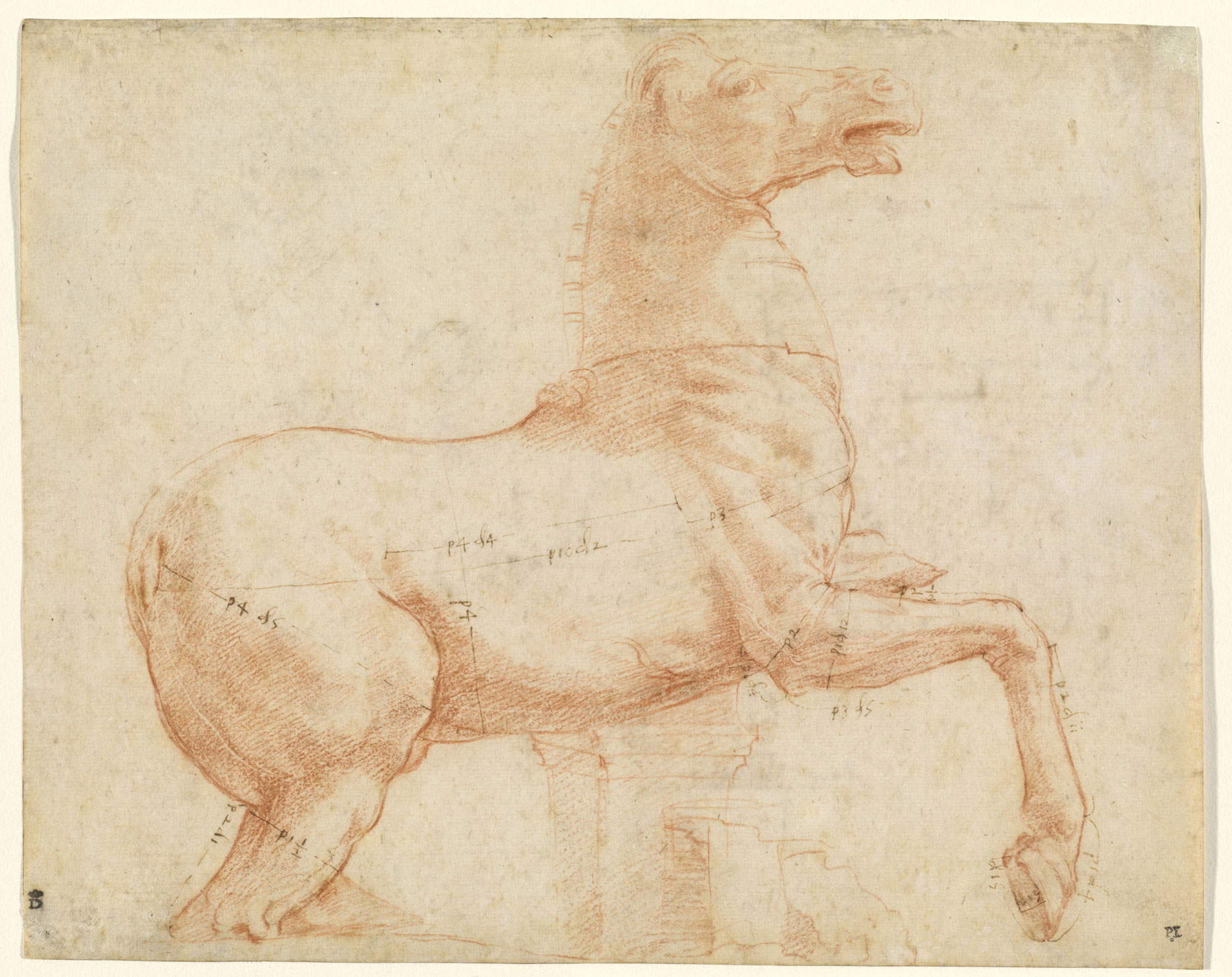by Redazione , published on 24/02/2020
Categories: Exhibitions
/ Disclaimer
Major exhibition on Raphael at Scuderie del Quirinale unveiled in Rome: it will run from March 5 to June 2, 2020.
Presented today in Rome the major exhibition at the Scuderie del Quirinale celebrating the 500th anniversary of the death of Raphael Sanzio (Urbino, 1483 - Rome, 1520): the exhibition, titled Raphael 1520-1483 and curated by Marzia Faietti and Matteo Lafranconi with contributions from Vincenzo Farinella and Francesco Paolo Di Teodoro, will be on view from March 5 to June 2, 2020, and brings together for the first time more than one hundred works that are autograph or otherwise traceable to Raphael’s conception, including paintings, cartoons, drawings, tapestries, and architectural plans. These works will be joined by numerous comparative and contextual works (sculptures and other ancient artifacts, Renaissance sculptures, codices, documents, precious masterpieces of applied art) for a total amount of 204 works on display, of which 120 are by Raphael himself. The exhibition will be inaugurated on March 3 by Head of State Sergio Mattarella and the highest institutional officials together with representatives of the main foreign countries that have made their contributions. It is a highly anticipated event: to date more than 60,000 tickets have been sold with requests from all over the world.
The exhibition is the flagship project of the program approved by the National Committee for Raphael’s Celebrations, established by Cultural Heritage Minister Dario Franceschini and chaired by art historian Antonio Paolucci. The project saw the collaboration of the Borghese Gallery, the Colosseum Archaeological Park and the Vatican Museums. On display will be works from the collections of the most important national and international museums and collections, including: for Italy, museums such as the Gallerie Nazionali d’Arte Antica, the Pinacoteca Nazionale di Bologna, the Museo e Real Bosco di Capodimonte, the Galleria Borghese, the Museo Archeologico Nazionale di Napoli, and the Fondazione Brescia Musei; and from abroad, works from the Vatican Museums, the Louvre, from the National Gallery in London, the Museo del Prado, the Museo Nacional de Artes decorativas in Madrid, the National Gallery of Art in Washington, the Metropolitan Museum in New York, the Albertina in Vienna, the British Museum, the Royal Collection, the Ashmolean Museum in Oxford, the Musée des Beaux- Arts in Lille.
Works on view include the Grand Duke’s Madonna and the Veiled Madonna from the Uffizi Galleries, and Santa Cecilia from the Pinacoteca di Bologna. There are also works that have never returned to Italy since their export for collectors’ reasons such as the Madonna Alba from the National Gallery in Washington, the Madonna della Rosa from the Prado or the Madonna Tempi from the Alte Pinakothek in Munich. Also, the Portrait of Baldassarre Castiglione and theSelf-Portrait with Friend from the Louvre. For the first time, the portraits of the two popes that allowed Raphael to demonstrate his immense artistic potential during his Roman years, namely that of Julius II from the National Gallery in London and that of Leo X with Cardinals Giulio de’ Medici and Luigi de’ Rossi from the Uffizi, presented for the first time after a very careful restoration, which lasted three years, by the Opificio delle Pietre Dure in Florence, an intervention that restored the original luministic and chromatic clarity and the incredible descriptive power of details.
The exhibition’s scientific committee, chaired by Sylvia Ferino Pagden, supported and deepened the work of the curatorial team, allowing a decisive confrontation with current research and stimulating a fruitful dialogue among the most accredited scholars in the field such as Nicholas Penny (former director National Gallery of London), Barbara Jatta (director Vatican Museums), Dominique Cordellier (Musée du Louvre), Achim Gnann (Albertina, Vienna), Alessandro Nova (Kunsthistorisches Institut, Florence), Alessandro Viscogliosi (Sapienza, University of Rome), Mario Scalini (Regional Director Museums of Emilia Romagna), Guido Cornini (scientific responsible for the art of the 15th-16th centuries of the Vatican Museums). Decisive, in terms of loans and scientific work done, was the contribution of the Uffizi Galleries, with 49 works, including more than 30 by Raphael himself. Among these a special mention deserves the aforementioned Portrait of Leo X with Cardinals Giulio de’ Medici and Luigi de’ Rossi, among the most famous works kept in Florence now visible to the general public after a delicate restoration work commissioned precisely on the occasion of the Roman loan, and certainly the most representative work of the highest prestige of his commissions.
The exhibition is organized in Rome because, as is well known, the relationship between the Urbino and the city of the popes was very intense: here, Raphael lived from 1509 to 1520. These were eleven intense and prolific years, during which the artist was able to express his talent in new and experimental forms. The exhibition pays particular attention to the fundamental Roman period, while describing in its entirety, in a monographic key, the whole of Urbino’s vast and articulated creative production: from the plastic arts to the decorative arts, from antiquarianism to architecture and urban planning (Raphael became responsible for the Fabbrica di San Pietro in 1514) the exhibition itinerary will not be limited to the presentation of the masterpieces of painting alone but will extend to the artist’s entire design activity, with a breadth never attempted until now in exhibitions dedicated to him. It will thus speak of Raphael the artist but also of Raphael the “superintendent,” called on behalf of Pope Leo X to direct archaeological excavations, to study and preserve the urban remains of ancient Rome, and to supervise the grandiose construction site of St. Peter’s Basilica. The exhibition is then articulated according to an original idea, which proposes a backward journey through Raphael’s career, starting on April 6, 1520, to retrace Raphael’s entire creative adventure, from Rome to Florence, from Florence to Umbria, to his Urbino roots. An exhibition, then, organized in the form of a flash-back, and to better emphasize this character, the itinerary starts with a spectacular life-size reproduction of Raphael’s monumental tomb in the Pantheon commissioned for the occasion from the Factum Foundation for Digital Technology in Conservation, a world leader in digital surveys related to heritage conservation. The same Factum oversaw the reproduction of Raphael’s preparatory cartoon for the tapestry The Sacrifice of Lystra (featured in the exhibition on loan from the Vatican Museums), made under a concession from the Royal Collection and in collaboration with the Victoria & Albert Museum in London.
Special events and workshops will accompany the exhibition: a rich program of lectures, meetings and conferences by leading experts in the field is expected. There will be eleven appointments to deepen the experience of the exhibition, going to investigate the historical period and the cultural temperament at the time of Raphael: the papal court, the noble families, the patrons and men of letters who lived in a Rome rich and teeming with activity, straining to recover the splendor and grandeur of its history. The encounters will touch on lesser-known and curious aspects (such as fashion, banquets and Roman luxury in the early 16th century) but also on fundamental themes of the retrospective, observed and analyzed in detail, such as the multiformity of Raphael’s genius in his work as a scholar and conservator of the archaeological heritage of ancient Rome, a true progenitor of the protection of cultural property. All visitors to the exhibition will also receive a complimentary booklet with the essay Raphael’s Modernity. From the Letter to Leo X to the Italian Constitution, signed by historian and intellectual Salvatore Settis.
“An exhibition,” anticipates Minister Franceschini, “of extreme scientific rigor, great educational content and significant popularizing capacity, which illustrates Raphael in the fullness of a Renaissance man, committed to the search for and protection of beauty and harmony in all his activities, from his pictorial expression to the performance of his office as prefect to the antiquities of the State of the Church, contributing to the development of the full awareness of the need to safeguard the cultural heritage.”
“The exhibition,” says Mario De Simoni, president and CEO of Ales - Scuderie del Quirinale, “honors a unique moment in the history of our culture, the 500th anniversary of the death of the painter par excellence, Raphael. And it does so through a journey backwards, from his death to his Urbino youth, illustrating, with close and unprecedented comparisons, and with masterpieces beloved by all, the extraordinary parabola of Raphael the total artist. With the Uffizi Galleries the collaboration has been so organic that on this occasion one can think of a journey of immersion in Raphael’s world that the attentive visitor will be able to make between Rome and Florence.”
“Never in history,” stresses Uffizi director Eike Schmidt, “has it been possible to admire so many of Urbino’s masterpieces, now collected and exhibited together to celebrate the 500th anniversary of his death. Art lovers from all over the world cannot miss this exceptional opportunity to come to Rome, to the Scuderie del Quirinale. It will be a unique opportunity, at least for this generation, to fully immerse themselves in the marvelous universe of Raphael’s art told by a never-before-seen itinerary filled with more than 200 works. The Uffizi Galleries are proud to have co-organized this epoch-making exhibition, sending from Florence some of the artist’s most famous and celebrated paintings and drawings, which make up almost a quarter of the entire exhibition.”
For Marzia Faietti, curator of the exhibition, “approaching Raphael is a very easy thing to do: and this is because the Urbino artist is the author of a complex art but at the same time capable of communicating himself to everyone. His painting is so thoughtful, pondered, sublimated, it contains so many and layered levels of reading that every observer, from the simplest to the most cultured, has the possibility to admire it and admire different aspects and qualities. Raphael is an artist for everyone.”
Matteo Lafranconi, director of the Scuderie del Quirinale and curator of the exhibition, says that “the main idea that has inspired the reflections of us curators from the beginning has been to work for the construction of a worthy tribute to the artist’s greatness; a tribute capable of restoring, at least by approximation, the quality, variety, grace, culture and intelligence of Raphael’s creative thought. In this spirit of service, and while being aware of the difficulties, we have tried to maintain as high as possible the ambitions of completeness and spectacularity of the exhibition itinerary, in the conviction that no effort was unworthy of being attempted to celebrate Raphael and his work on such an extraordinary anniversary.”
The exhibition opens Sunday through Thursday from 10 a.m. to 8 p.m., Friday and Saturday from 10 a.m. to 10:30 p.m. (ticket office closes one hour earlier). Tickets: full 15 euros, reduced 13 euros, free for children under 6, reduced 2 euros for children and youths aged 6 to 17. Open ticket without time slot 22.50 euros. Audioguide costs 2 euros and can be purchased only on the day of the visit. Special reductions: lunch break 10 euros (for those who visit the exhibition Monday to Friday from 12:40 to 14:20), over 65 10 euros (only on Mondays and Tuesdays from 3 p.m.), university students, researchers and doctoral students 5 euros (only on Fridays and Saturdays from 7 p.m.), 2x1 friendly 15 euros (i.e., one full ticket and one free) only on Thursdays from 3 p.m. Reservation fee for all tickets: 2.50 euros. For all information: call center 02 92897722, info@scuderiequrinale.it or the website www.scuderiequirinale.it.
Below is a gallery with some of the works on display.
 |
| Raphael, Portrait of Leo X between Cardinals Giulio de’ Medici and Luigi de’ Rossi (1518-1519; oil on panel; Florence, Uffizi Galleries, Statue and Painting Galleries). Restoration of the work was made possible thanks to the support of Lottomatica Holding. Ph. Photographic Cabinet of the Uffizi Galleries - Courtesy of the Ministry of Cultural Heritage and Activities and Tourism |
 |
| Raphael, Portrait of Baldassare Castiglione (1513; oil on canvas; Paris, Musée du Louvre, Département des Peintures). © Musée du Louvre, Dist. RMN - Grand Palais / Angèle Dequier |
 |
| Raphael, Madonna of the Rose (1518-1520; oil on panel transported on canvas; Madrid, Museo Nacional del Prado). © 2020. Image copyright Museo Nacional del Prado |
 |
| Raphael, Saint Cecilia with Saints Paul, John the Evangelist, Augustine and Mary Magdalene (Ecstasy of Saint Cecilia) (before 1518; panel transported on canvas; Bologna, Polo Museale dell’Emilia Romagna, Pinacoteca Nazionale). By concession of the Ministry of Cultural Heritage and Activities and Tourism, Polo Museale dell’Emilia Romagna |
 |
| Manufacture of Pieter van Aeist, The Sacrifice of Lystra (1517-1519; warp: wool; Vatican City, Vatican Museums, Vatican Picture Gallery, Raphael Hall). Photo © S. C. V. Governorate - Directorate of Museums. |
 |
| Raphael, Portrait of a Woman in the Clothes of Venus (“Fornarina”) (c. 1519-1520; oil on panel; Rome, National Galleries of Ancient Art, Barberini). National Galleries of Ancient Art, Rome (MIBACT) - Hertziana Library, Max Planck Institute for Art History/Enrico Fontolan |
 |
| Raphael, Madonna of Dawn (c. 1510; oil on panel transferred to canvas; Washington, D.C., National Gallery of Art, Andrew W. Mellon Collection). © National Gallery of Art, Washington |
 |
| Raphael, Portrait of Julius II (before March 1512; oil on panel; London, The National Gallery). © The National Gallery, London |
 |
| Raphael, Madonna Tempi (1507-1508; oil on panel; Munich, Bayerische Staatsgemäldesammlung Alte Pinakothek). © BAYERISCHE STAATSGEMÄLDESAMMLUNGEN |
 |
| Raphael, Study for the Madonna Tempi (c. 1507-1508; black stone with white highlights; Montpellier, Musée Fabre). © Musée Fabre de Montpellier Méditerranée Métropole / photographie Frédéric Jaulmes |
 |
| Raphael, Self-Portrait (1506-1508; oil on poplar panel; Florence, Uffizi Galleries, Gallery of Statues and Paintings). Photographic Cabinet of the Uffizi Galleries - On concession of the Ministry of Cultural Heritage and Activities and Tourism. |
 |
| Raphael, Nude Study for the Dispute of the Sacrament (c. 1509; black stone; Florence, Uffizi Galleries, Drawings and Prints Photographic Cabinet of the Uffizi Galleries). Courtesy of the Ministry of Cultural Heritage and Activities. |
 |
| Raphael, Horse of the Ancient Group of Dioscuri on the Quirinal Hill (c. 1513; red stone, pen and ink; Washington, D.C., National Gallery of Art). © National Gallery of Art, Washington |
| <img title=“Raphael, Moses kneeling before the burning bush (c. 1514; cardboard and traces of white lead on twenty-three conjoined sheets of paper, pierced for the <a href=”https://www.finestresullarte.info/opere-e-artisti/la-tecnica-dello-spolvero“>powder</a>; Naples, Museo e Real Bosco di Capodimonte). By concession of the Ministry of Culture and Tourism - Museo e Real Bosco di Capodimonte.” src=“/review/images/2020/fn/raffaello-mose-inginocchiato-roveto-ardente.jpg” alt=“Raphael, Moses kneeling before the burning bush (c. 1514; cardboard and traces of white lead on twenty-three joined sheets of paper, pierced for dusting; Naples, Museo e Real Bosco di Capodimonte). By concession of the Ministry of Cultural Heritage and Activities and Tourism - Museo e Real Bosco di Capodimonte.” /> |
| Raphael, Moses kneeling before the burning bush (c. 1514; cardboard and traces of white lead on twenty-three joined sheets of paper, pierced for dusting; Naples, Museo e Real Bosco di Capodimonte). By concession of the Ministry of Cultural Heritage and Activities and Tourism-Museum and Real Bosco di Capodimonte. |
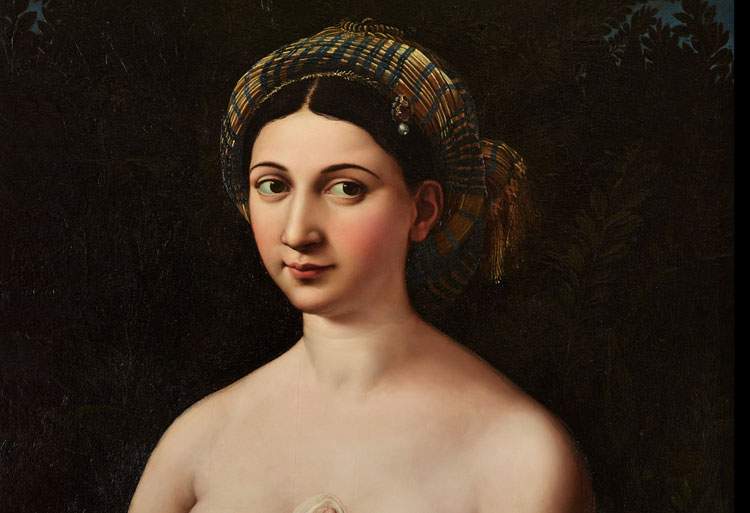 |
| Here's the big Raphael exhibition: over 200 works, restorations, a journey backwards. Photos of the masterpieces |
Warning: the translation into English of the original Italian article was created using automatic tools.
We undertake to review all articles, but we do not guarantee the total absence of inaccuracies in the translation due to the program. You can
find the original by clicking on the ITA button. If you find any mistake,please contact us.
